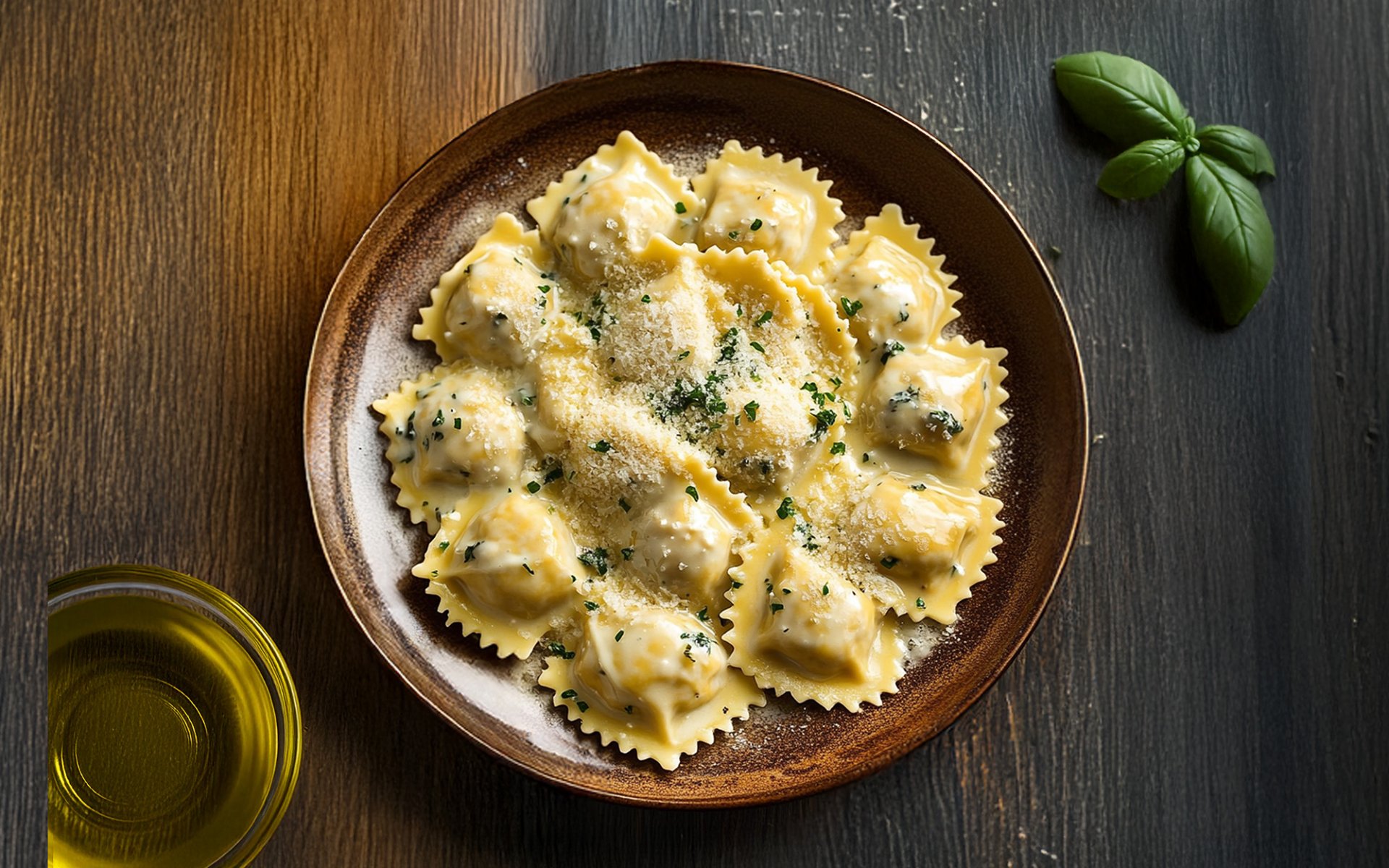Ravioli

Characteristics and Ingredients of Ravioli
Ravioli is an Italian pasta consisting of two thin sheets of dough enclosing a filling such as cheese, meat, vegetables, or even sweet ingredients. The most common shape is square, but ravioli can also be found in rectangular, semicircular, or round forms.
Origins and Historical Debate
The exact origin of ravioli is debated among food historians, but it is generally believed to date back to the 12th century in Italy. The dish was likely influenced by Arab culinary traditions in Sicily. The earliest known mention is from 12th-century Genoese merchant records describing Raviolo, a pasta filled with herbs and cheese.
Legends and Development from the Middle Ages to the Renaissance
A legend tells of a chef named Raviolo in 13th-century Naples who invented the stuffed pasta, though no solid evidence exists. By the 14th century, ravioli had gained widespread popularity, with recipes recorded in various cookbooks, including Englands The Forme of Cury, where it was called Rauioles.
Regional Variations and Evolution
Early ravioli fillings were simple, such as vegetables, herbs, cheese, or leftover meats, with thicker, coarser dough than today. Different Italian regions developed their own recipes, like Piedmonts small Ravioli al plin served with butter and sage, and Emilia-Romagnas pumpkin-filled Ravioli di zucca.
Renaissance Popularity and Global Spread
During the Renaissance, ravioli became a luxurious dish for the upper class, using rare meats, spices, and expensive cheeses. Italian immigrants in the 19th and early 20th centuries brought ravioli to countries like the United States, Argentina, and Australia, adapting it to local ingredients and tastes.
Ravioli Today
Today, ravioli remains a beloved dish worldwide, with a wide range of fillings from traditional cheese and meat to gourmet options like lobster, truffles, and even sweet fillings such as chocolate and ricotta cheese.


